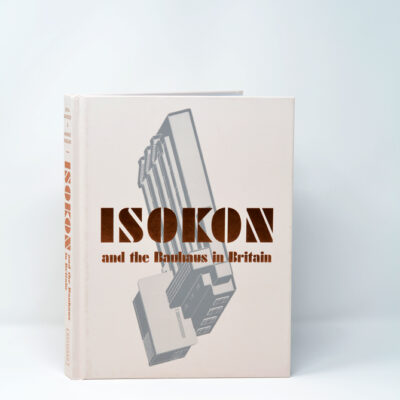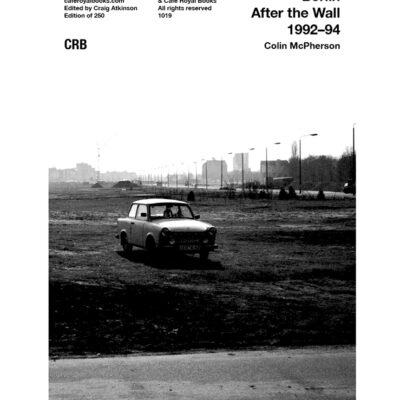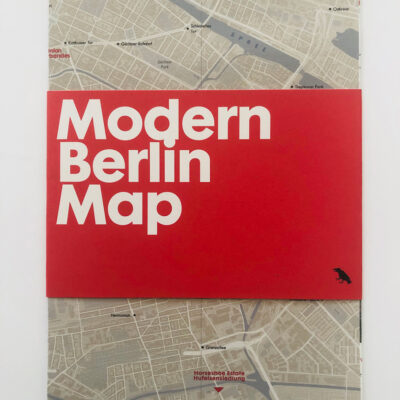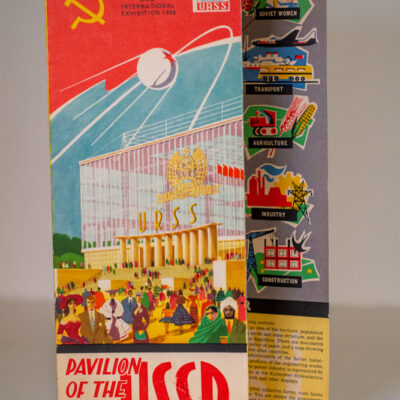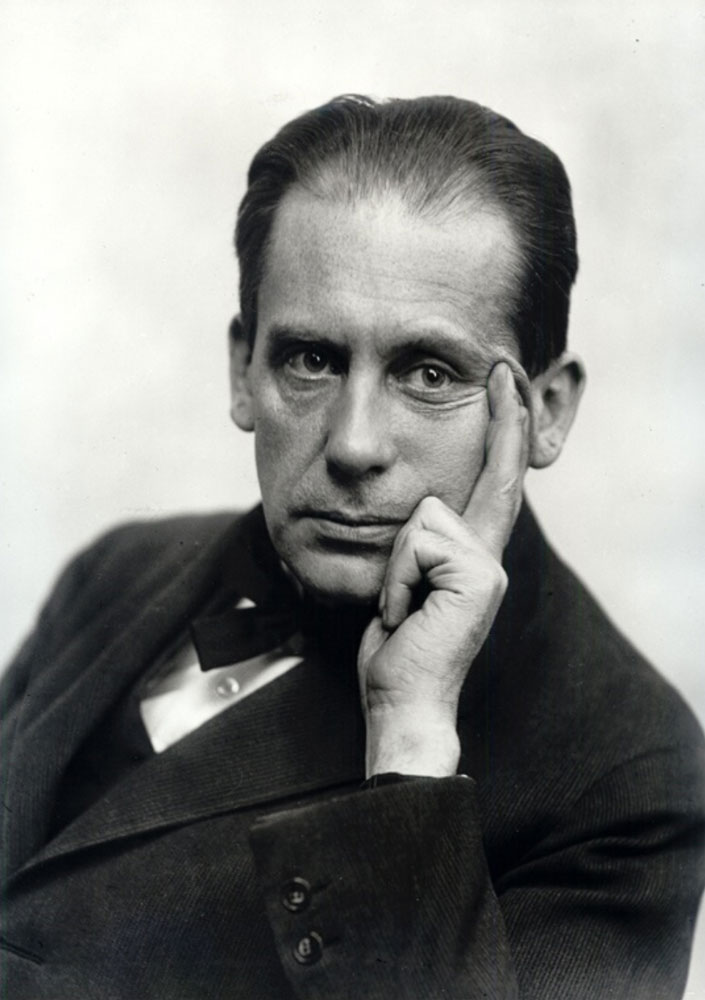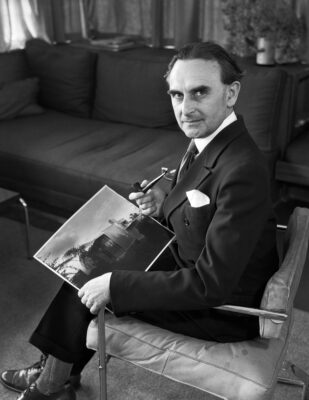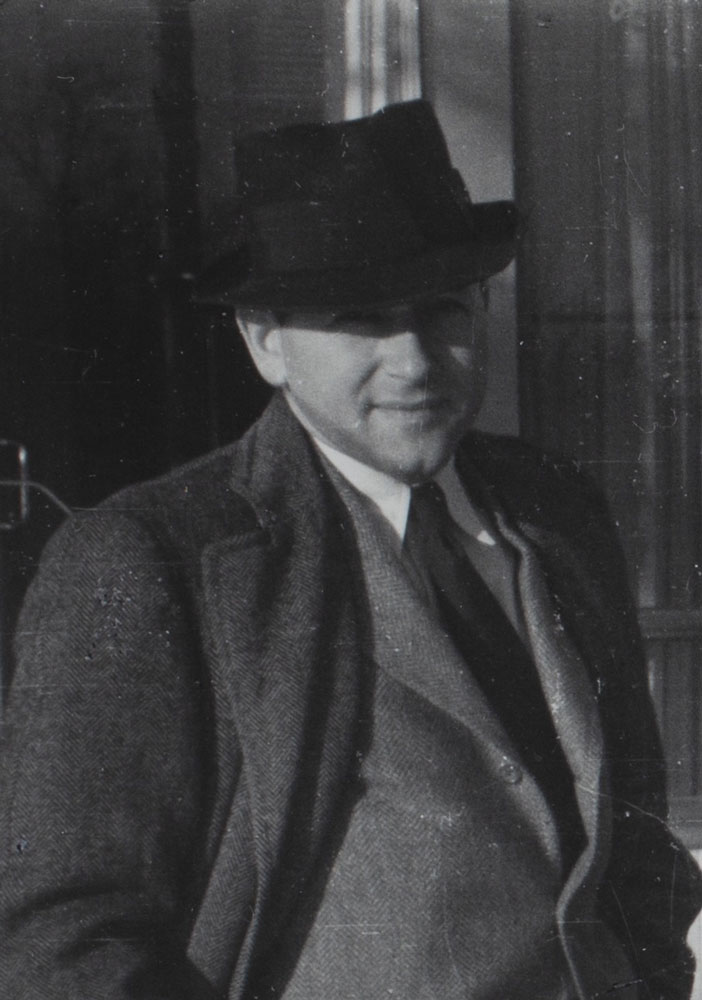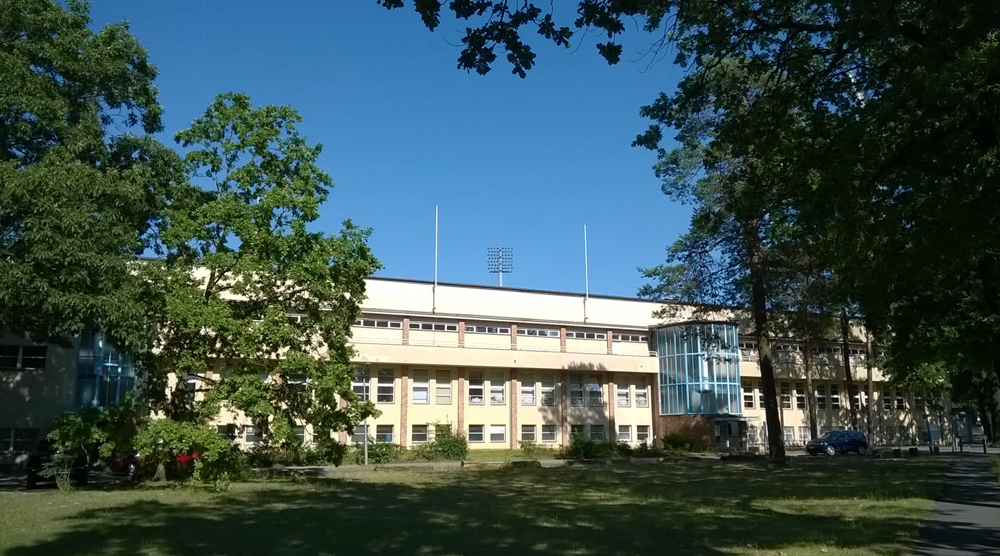
Fred Forbát
Alfred ‘Fred’ Forbát, 1897-1972, architect born in Pécs, Hungary
Born in the ancient city which was the birthplace of another famous modernist, Marcel Breuer. Fred’s family name at birth was Füchsl, the Jewish family changed their name after his birth to be more connected to Hungarian culture.
Forbát began his architecture training at TU Budapest however, it was cut short by WW1. In 1915 he was invalided out due to a serious lung infection, he spent the war years studying science books. Post-war he switched subject, and gained his Degree in Engineering at TU Munich, graduating in 1920. Early in his career, Forbát worked for construction developer Adolf Sommerfeld’s company Adolf Sommerfeld Bauausführungen, for whom he designed Villa Stadthagen in 1921. He accepted an offer to move to Dessau in Germany to work for Walter Gropius, director of the Bauhaus, in his company Bauhaus Siedlung GmbH. Here he met Farkas Molnár and the three architects worked together developing the concept of communal housing settlements, Siedlung.
Gropius and Forbát
A notable project he carried out with Gropius around this time was the creation of a building for Kappe and Company in Alfeld. In 1923 Gropius and Forbát developed a new building concept called Wabenbau, where groups of homes are clustered together like cubes in a honeycomb. The idea formed part of the 1923 groundbreaking Bauhaus Exhibition, Georg Muche, the schools youngest master and Adolf Meyer built Haus Am Horn as a prototype for what was intended to be a large communal settlement. The project ran aground two years later marred in financial difficulties the school’s budget was cut and in 1925 due to local political pressure, the Bauhaus shut its doors in Weimar and moved to Dessau.
Sommerfeld-DEHATEGE
Forbát continued working for the Sommerfeld-DEHATEGE company until 1928 on a League of Nations funded programme for the Refugee Settlement Commission. The brief, to build 10,000 homes for Greek refugees.
Forbát briefly returned to Hungary in 1925, perhaps to get papers in order. In 1926 Ludwig Van der Rohe (later a Bauhaus Director) founded a circle of like-minded modernist architects known as Der Ring. Members included Fred Forbát, Ernest May, Adolph Meyer, Martin Wagner, Erich Mendelsohn, Bruno Taut and Hugo Häring.
Forbát was now completely absorbed in life in Germany, working on the planning of the urban settlement Großsiedlung Zehlendorf, Siemensstadt and Hastlehost. It was a natural progression to take up German citizenship in 1928. What Gropius and Forbát shared from early on was the vision and determination to create affordable housing genuinely attainable for a wider section of the population. What has to be remembered is that this was happening against a backdrop of huge political upheaval.
May Brigade
From 1928 until 1932 he worked freelance from the office of Hubert Hoffman and also taught from time to time in the Itten school run by former Bauhaus master Johannes Itten. He designed the Mommsenstadion football stadium in Berlin 1930 (later used for the 1936 Olympic football matches) before making the monumental decision in 1932 to join Ernest May in Russia. He, become one of the ‘May Brigade’. The brigade included Mart Stam and Lottie Beese Stam, Arthur Korn and Margarete Schütte-Lihotzky. They travelled as guests of the Soviet government to create planned cities, an early one was the industrial city of Magnitogorsk. Ultimately the brigade was in Russia from 1930-37.
Forbat worked on the city plan for Karaganda in Kazakhstan in a region rich in coal deposits (a very different proposition from sophisticated Berlin). He was given no more than a few weeks to complete the project in a volatile atmosphere. Stalin had relocated tens of thousands of ethnic Volks-Deutsche to the area however there were no homes or basic amenities for them. When Forbát arrived they were living in tents. He worked on other projects such as Lopatinski and Magnitogorsk. Clearly this was not a long term option for Forbat, he stayed for one year (the other members of the brigade, by and large, stayed longer).
Exile
By now it was 1933 he could not return to Germany and instead headed first to Athens and in the summer back to Hungary. The political climate in Germany had changed drastically. New racial laws cut short his career in Germany. The Nazis banned all Jewish architects from remaining members of the Reichskulturkammer für bildende Künste. Membership of the association was a professional requirement and further Jews were not allowed to retain their professional title. He was deemed stateless so had no choice but to head back to Hungary.
Gropius had left for England as had Sommervelt.
His time in Germany had been enormously prolific he had designed large scale housing blocks in Siemenßstade, homes in Haselhorst, a riding school in Düppel, worked on the plans for Zehlendorf and Machnow, designed a hospital and several schools.
Fred opening an architect’s practice in his home town Pecs but frankly had developed far beyond it in the preceding years He accepted a small number of commissions to design houses for clients and businesses which kept him going until 1938. However, the dark cloud sweeping Europe did not leave Hungary untouched. The atmosphere was claustrophobic and tone nationalistic. He tried every avenue to leave but countries were operating quotas and he simply could not find a way out. Finally, in 1938 an opportunity arose to accept an invitation to work in Sweden with Uno Åhrén.
Forbát left for Sweden where he became a city planner. He helped develop several districts of Stockholm. In 1952 he became the Swedish representative to CIAM.
In 1957 he returned to Germany and worked on the Interbau project. He died in Vallingby, Sweden in 1972.
It is impossible to talk about the development of modernism and the Neue Bauen without placing Fred Forbát at its very centre.




